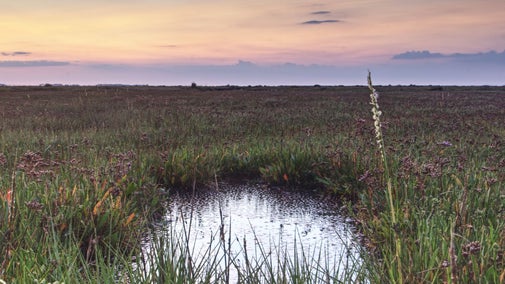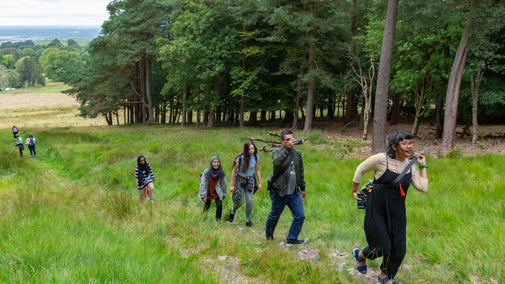Blakeney Point coastal walk
Norfolk
Take a leisurely, but active stroll, along Blakeney Point’s 4 mile-long (6.4km) shingle spit to the sand dunes near the Lifeboat House, home to a variety of unusual plants and wildlife.
Start point
Cley Beach, Norfolk Wildlife Trust car park, grid ref: TG048453Trail information
Difficulty
Accessibility*
Full trail
DistanceMiles: 0 (km: 0)Short trail
DistanceMiles: 7 (km: 11.2)*Much of the route is on soft shingle, which can be difficult to walk on. Not suitable for pushchairs. This route is possible at all states of the tide, except during extreme weather, but is an easier walk at low tide. Important areas for breeding seals are fenced off and access is restricted, which includes much of the western end of the Point. Please follow on-site signage.
Wildlife and restrictions
Blakeney Point is an important area for breeding wildlife. Please obey all signs and do not cross any fence lines. Some the birds are protected and it is a prosecutable offence to disturb them. It is not possible to see the seal colony on Blakeney Point on foot outside of the pupping and breeding season (between late October and mid-January). If you wish to see the seals during the spring and summer months, then please hop on a boat from Morston Quay.
More near here
Blakeney to Stiffkey coastal walk
Enjoy views across Norfolk's open landscape on this coastal walk, starting at Blakeney Nature Reserve and taking in Morston and Stiffkey salt marshes.

Blakeney Freshes coastal wildlife walk
This family-friendly circular walk through Blakeney village and around Blakeney Freshes offers impressive coastal views and is ideal for spotting birds and wildlife.

Blickling mausoleum walk
This historical scenic stroll through woods and open land at Blickling Park leads you to its striking Mausoleum. Look out for barn owls along the way.

Get in touch
Blakeney Office, Friary Farm, Cley Road, Norfolk, NR25 7NW (No Public Access)
Our partners

We’ve partnered with Cotswold Outdoor to help everyone make the most of their time outdoors in the places we care for.
You might also be interested in
Walking
Explore some of the finest landscapes in our care on coastal paths, accessible trails, woodland walks and everything in between. Find the best places to walk near you.

Cotswold Outdoor: our exclusive walking partner
Learn about the National Trust’s ongoing partnership with Cotswold Outdoor. Find out how they help us care for precious places and the exclusive discount available for National Trust supporters.

Staying safe at National Trust places
The special places in National Trust care sometimes come with a few risks for visitors, be it coastline or countryside. Find out how to keep safe throughout your visits.

Walking in Norfolk
Discover the best walks around Norfolk, from a stroll around the estate at Blickling to a bracing trek on the Norfolk Coast Path.



